Refund Guaranteed
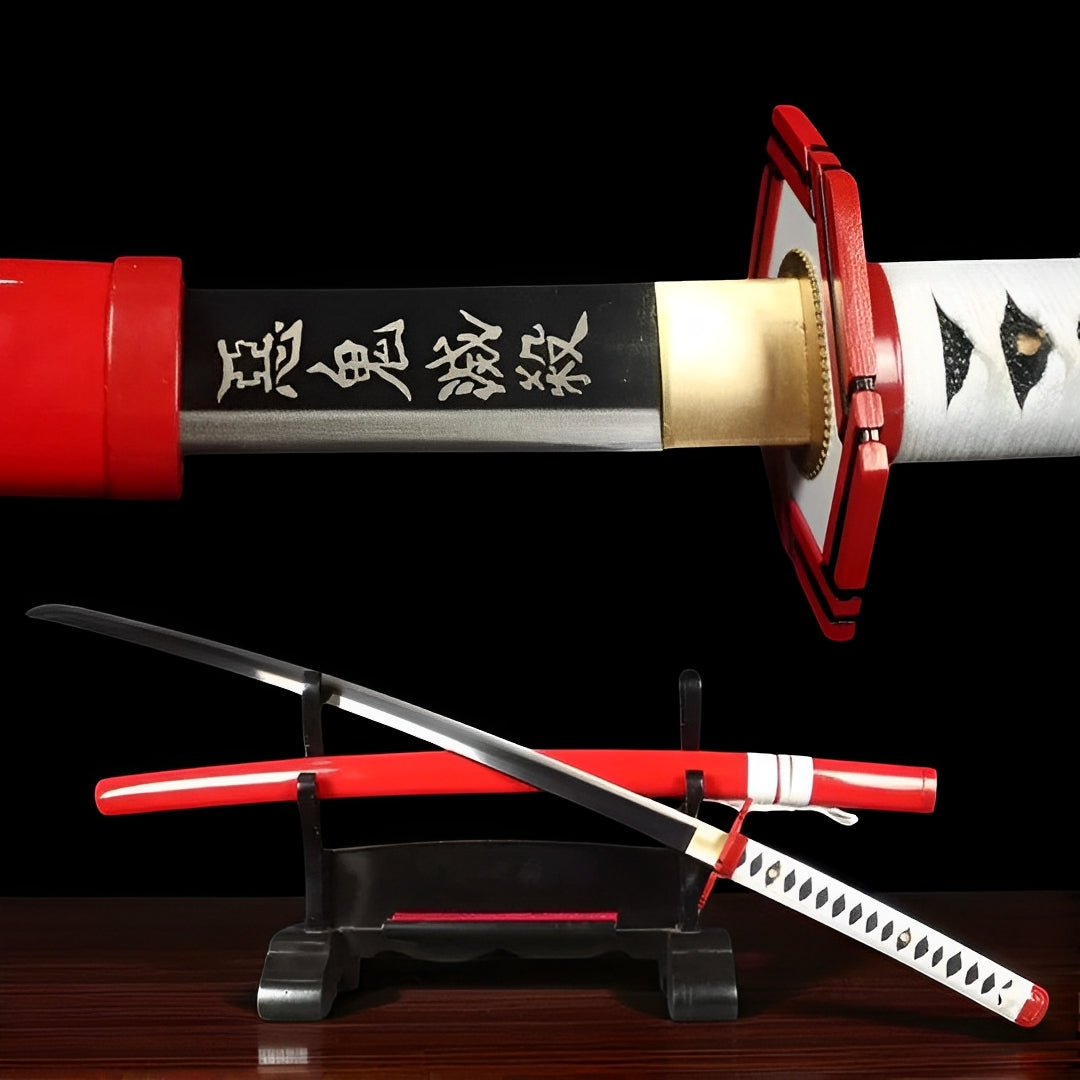

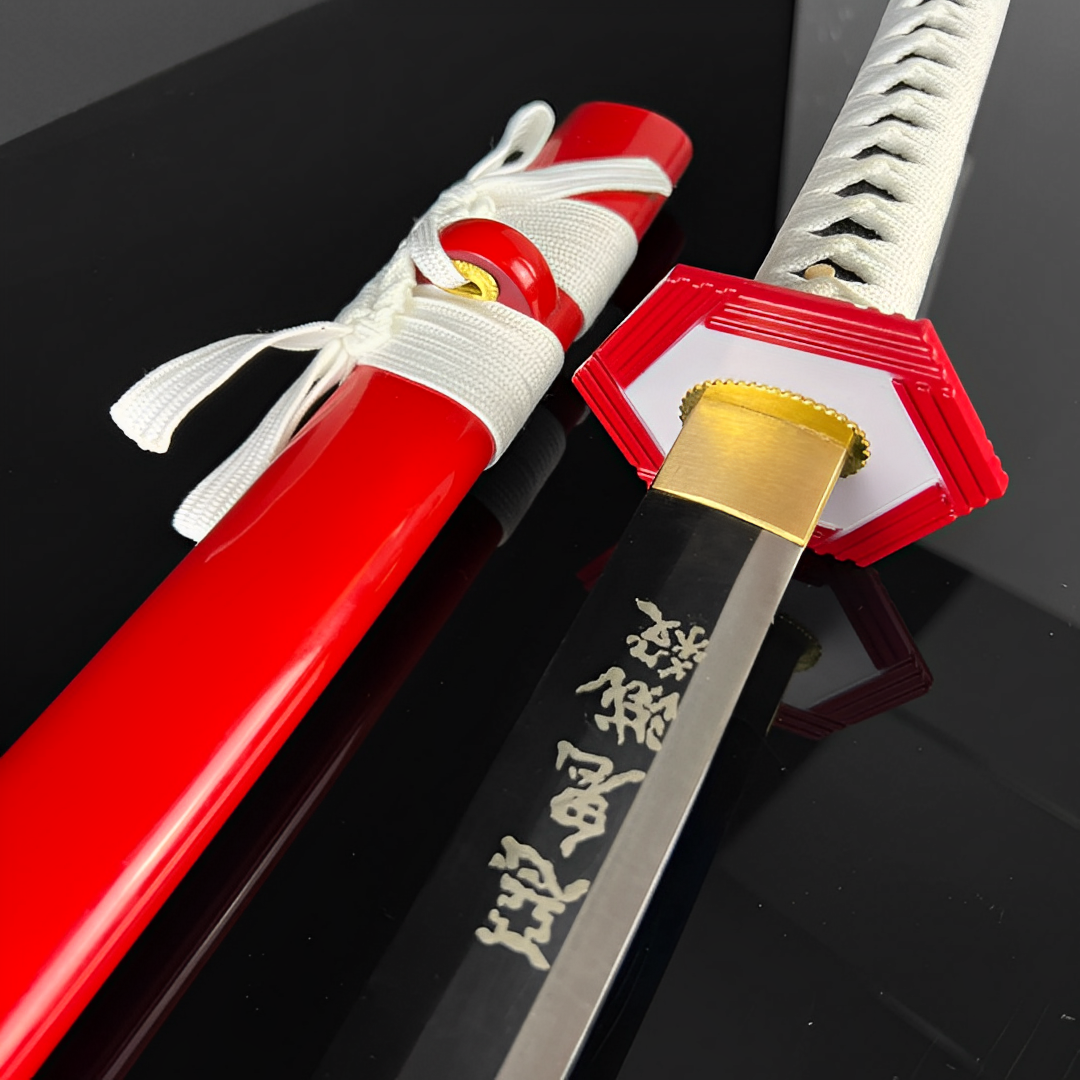
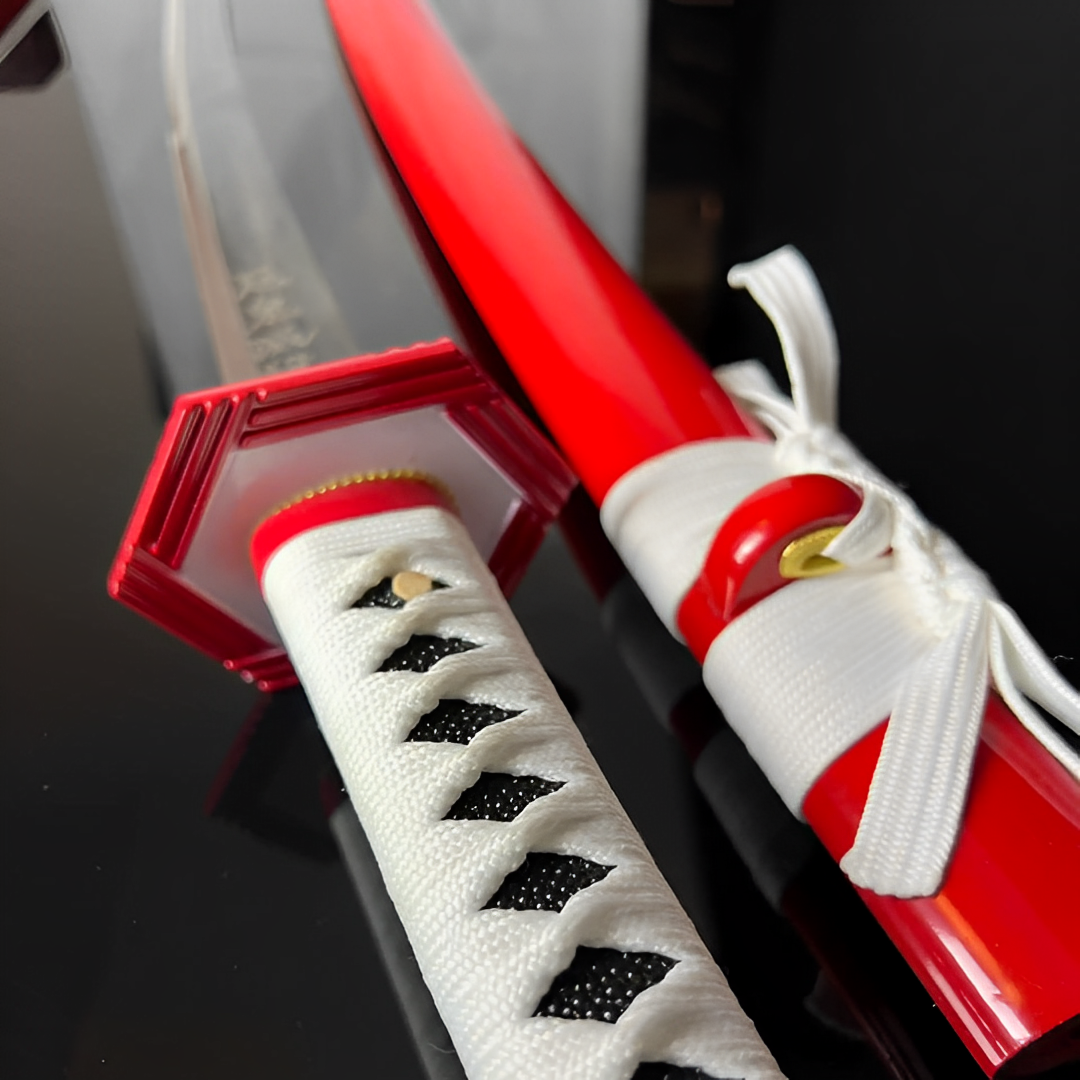
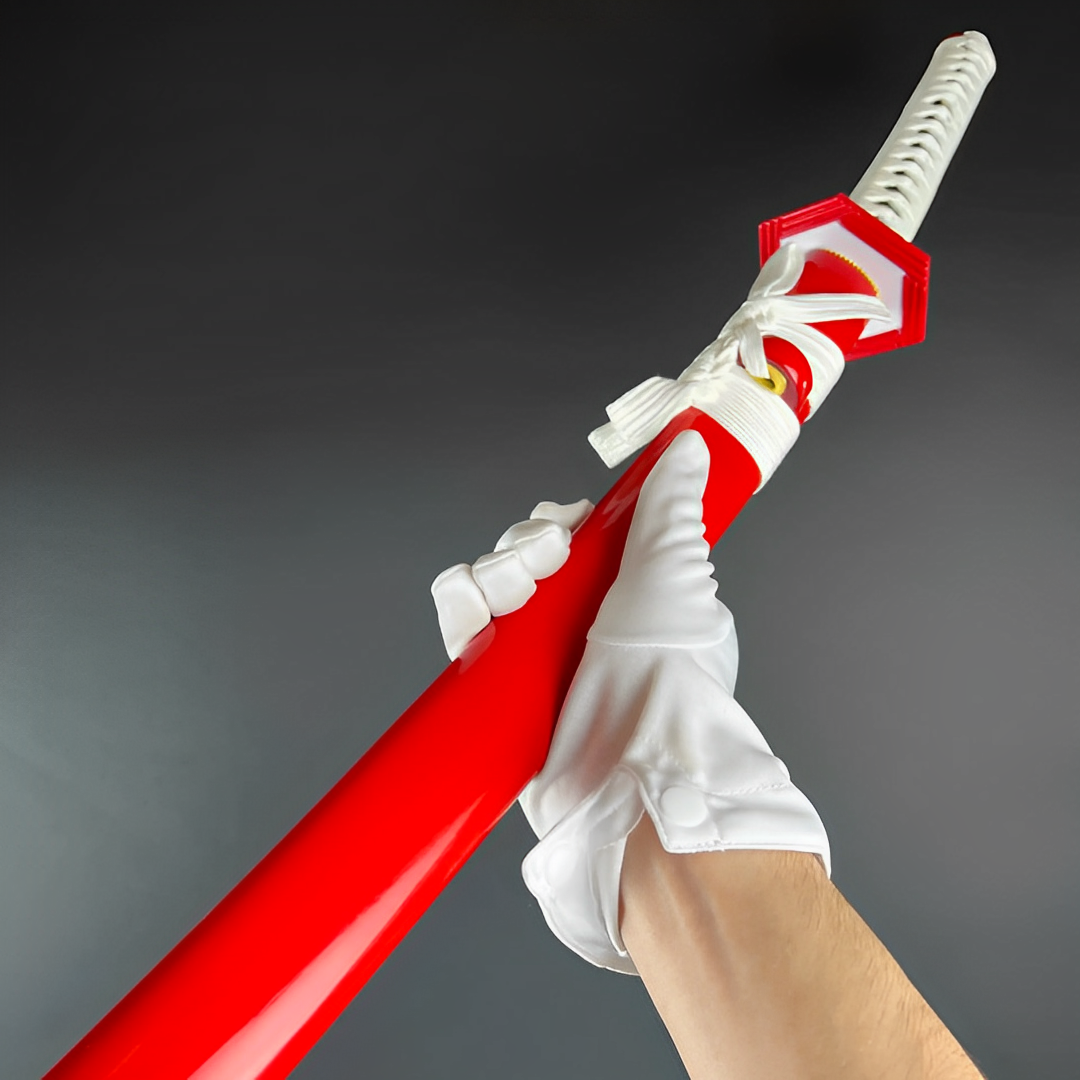
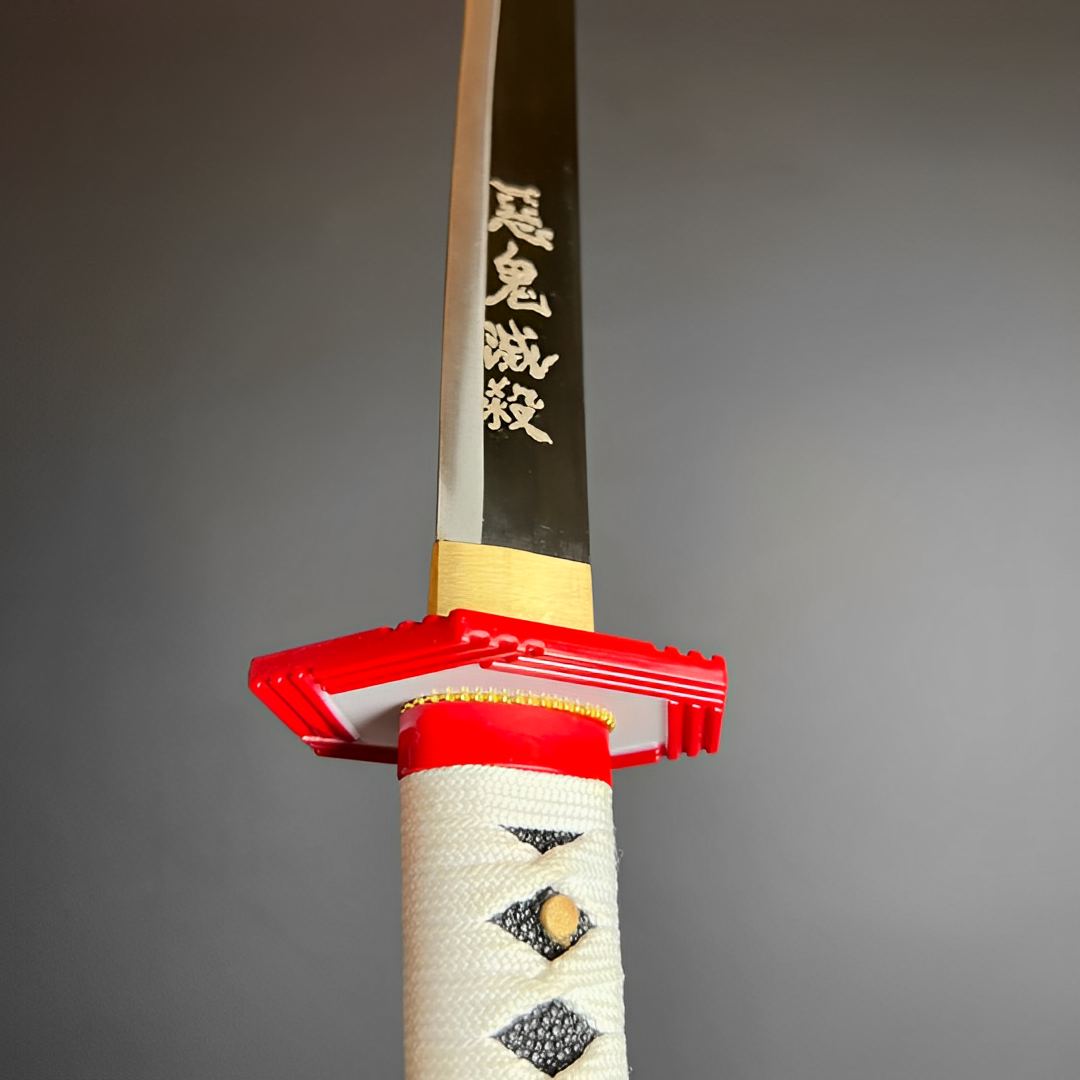
Giyu Tomioka Katana (Demon Slayer) - トミオカ
Included with your order



Note: Engraving placement and orientation may vary by blade model (hamon, geometry, and flat area).
Free Shipping over $250
No Bots, No AI
Refund Guaranteed
Free Shipping over $250
No Bots, No AI
Our team is here to help with any questions or concerns.
We’re always happy to assist you — don’t hesitate to reach out.

Giyu Tomioka Katana (Demon Slayer) - トミオカ
Specifications
- Handmade
- SHARP
- Blade: 1060 Carbon Steel
- SAGEO & ITO in Cotton
- Synthetic Rayskin
- Full Tang
- Iron Tsuba
- Total size: 105cm / 41 (in)
- Blade size: 72cm / 28 (in)
- Blade width: 3,2cm / 1.2 (in)
- Blade thickness: 0,7cm / 0.27 (in)
- Handle size: 30cm / 11.8 (in)
Giyu Tomioka Katana - Water Hashira Silent Depths
Bear elite burden with Giyu Tomioka's Katana, blade wielded by one who believes himself unworthy. This conflicted Water Hashira sword refuses simple heroism - scarlet coating paradoxically representing water's calm surface hiding deadly depths, pure white suggesting innocence lost when friend died saving him, kanji declaring demon destruction yet wielder questions deserving that mission. Not weapon of confident warrior but tool carried by survivor convinced his strength belongs to someone dead, asking whether accomplishment earned through another's sacrifice deserves celebration or eternal guilt.
Water Hashira Elite Status
Giyu Tomioka stands among Demon Slayer Corps' nine Hashira - the elite pillars representing humanity's strongest demon slayers, each mastering Breathing style to near-perfection. As Water Hashira, Giyu achieved what thousands attempt yet dozens accomplish: total mastery of Water Breathing's eleven forms plus creation of original technique (Dead Calm) transcending inherited tradition. This Hashira mastery blade represents pinnacle achievement in warrior culture where most die during training, where Final Selection kills majority, where even surviving graduates often fall to demons before achieving significant rank.
The Water Breathing lineage carries particular weight - it's foundational style from which many others derived, the default teaching for new recruits lacking elemental affinity, the "basic" form that paradoxically proves most versatile. Giyu mastering this fundamental style completely demonstrates truth that basics executed perfectly beat advanced techniques executed adequately. His fundamental perfection sword proves sophistication lies in execution depth, not technique breadth.
Hashira status comes with explicit responsibilities: training tsuguko (successors), eliminating Upper Moons, protecting humanity when lesser slayers would die instantly, maintaining Corps' reputation through exemplary conduct. That crushing weight explains Giyu's emotional isolation - carrying responsibility for lives saved and lives lost, knowing single mistake costs not just his life but everyone he could've protected had he survived.
Traditional Japanese sword culture associated specific blades with specific warriors - a Hashira's sword becomes extension of identity, the weapon representing years of training, countless battles survived, the refinement of technique into art form. Giyu's sword therefore isn't mere tool but physical manifestation of water mastery achieved through discipline when talent alone would've failed.
Elite collectors recognize Hashira weapons as tier above standard Corps blades - the difference between accomplished professional and talented amateur, between mastery and proficiency, between warrior who survived decades versus one who survived months. Owning Hashira replica means appreciating that excellence gap, respecting what separates competent from exceptional.
Crimson Paradox Element
The deep red coating creates immediate paradox: why does Water Hashira's blade blaze scarlet when water suggests blue, cyan, aqua? That color contradiction becomes metaphor for Giyu himself - appearing cold and aloof (water's calm surface) while hiding passionate trauma underneath (red's emotional intensity), his stoic exterior masking survivor's guilt burning constantly.
This paradox warrior blade red specifically suggests blood - the blood of demons Giyu slayed, yes, but more importantly the blood of Sabito, his friend who died during Final Selection saving Giyu and others, whose survival Giyu considers stolen destiny that should've belonged to worthier warrior. That red becomes permanent reminder: "I live because someone better died. I fight with strength that should've been his."
Traditional color symbolism can't explain this choice through elemental association; instead, the red communicates psychological truth about wielder - that calm exteriors often hide volcanic interiors, that stoic presentation can mask devastating guilt, that those appearing coldest sometimes burn hottest underneath. The hidden fire blade red announces: appearances deceive, surfaces lie, understanding requires looking beneath.
The specific shade matters - not bright cheerful red suggesting celebration, not dark burgundy suggesting aged wisdom, but vivid crimson suggesting fresh blood, immediate wound, pain that hasn't healed despite years passing. Giyu never recovered from Sabito's death; he simply learned functioning despite it, carrying guilt like permanent injury that won't heal because he won't let it.
Modern psychology recognizes survivor's guilt as legitimate trauma - those who survive when others die often question their worthiness, feel they "stole" survival that rightfully belonged to dead, punish themselves through emotional isolation. Giyu embodies that syndrome perfectly; the red blade becomes external marker of internal wound refusing to close.
Emotional Isolation Armor
Giyu's defining character trait: believing himself different from other Hashira, unworthy of camaraderie, fundamentally isolated through guilt others don't understand. His famous line "I'm not like you" alienates fellow Hashira who interpret aloofness as arrogance when actually it's self-loathing preventing connection. The isolation weapon represents that chosen loneliness - a blade wielded alone, maintained alone, its wielder refusing bonds because everyone he cared about died.
The white handle creates stark contrast against red elements, suggesting purity Giyu once possessed before trauma, the innocent boy who wanted helping people before learning help costs lives. That white becomes what he lost - the ability connecting with others naturally, the capacity accepting kindness without questioning whether he deserves it, the freedom living without constant self-judgment.
Traditional samurai culture actually celebrated emotional restraint, teaching warriors suppressing feelings enabling clearer tactical thinking, but Giyu's isolation exceeds cultural stoicism into dysfunction - he's not controlling emotions but denying them, not channeling feelings strategically but refusing acknowledging them entirely. The dysfunction blade white suggests that sometimes cultural values taken to extreme become pathology rather than virtue.
His relationship with Tanjiro specifically challenges this isolation - the younger slayer sees through Giyu's emotional armor, recognizes the guilt driving distance, refuses accepting rejection. That persistent connection eventually cracks Giyu's defenses, proving isolation was choice rather than destiny, demonstrating trauma doesn't have to define identity permanently if healing becomes possible.
Dead Calm Perfection
Giyu's signature technique "Lull" (or "Dead Calm" - 凪 Nagi) represents Water Breathing's ultimate evolution - creating zone of perfect stillness where all incoming attacks stop, the water so calm it becomes impenetrable barrier, defensive perfection achieved through offensive mastery. This perfect defense blade channels philosophy that greatest attack involves not being touched, that survival beats victory, that protecting what matters requires absolute control.
The technique specifically reflects Giyu's psychology - creating calm zone protecting others while keeping them at emotional distance, the defensive perfection becoming metaphor for emotional walls preventing pain of loss. If he never lets anyone close, their potential deaths can't hurt him. That tragically flawed logic drives his isolation, the Dead Calm technique becoming physical manifestation of emotional defense mechanisms.
Traditional Water Breathing forms emphasize flowing adaptability - redirecting force, using enemy momentum against them, achieving victory through flexibility rather than rigid strength. Dead Calm breaks that pattern by creating absolute stillness, suggesting Giyu transcended inherited style creating innovation reflecting personal philosophy rather than merely perfecting taught techniques. The innovation mastery sword proves true masters don't just execute existing techniques flawlessly but create new approaches expanding their art's possibilities.
The name itself carries weight - "dead" calm suggests lifelessness, the emotionless state Giyu inhabits through suppressing feelings, the psychological death he experienced continuing to function after Sabito's physical death. But "calm" also suggests peace, control, the mastery achieved through discipline when emotion would've destroyed him.
Survivor's Legacy Collection
For Water Hashira collectors, Giyu's blade represents essential piece completing Demon Slayer's Hashira arsenal. His popularity rivals series protagonists - the stoic lone wolf archetype resonates with viewers who identify with emotional isolation, who understand carrying guilt for circumstances beyond control, who appreciate characters' depths revealed gradually rather than immediately.
The red-and-white aesthetic photographs dramatically, creating images that work beautifully for cosplay portfolios, collection documentation, social media sharing. Giyu cosplays appear constantly at conventions, his distinctive half-red-half-blue haori combined with stern expression and red-hilted sword creating instantly recognizable silhouette.
Investment value specifically favors popular Hashira characters from completed series. Giyu consistently ranks top five in character popularity polls, his arc from isolated warrior to someone accepting connection resonating emotionally with fans who followed that growth across series' run. That sustained popularity ensures lasting collectible demand.
The elite warrior blade particularly appeals to collectors who appreciate characters earning their strength through discipline rather than innate talent, who succeeded despite (because of?) trauma, who proved that emotional damage doesn't prevent competence if you channel pain into purpose. Giyu represents that complicated relationship between trauma and achievement - his guilt drives excellence yet prevents fulfillment, his isolation enables focus yet denies connection, his strength comes from wound that won't heal.
Display considerations benefit from pairing with other Hashira weapons or specifically with Tanjiro's black blade - showing connection between Water Hashira master and student who unknowingly carried his friend's will forward, the generational passing of water techniques that continues despite Giyu believing himself unworthy teaching them.
Care Instructions: Maintain this Hashira blade understanding elite weapons demand elite maintenance. The scarlet coating requires gentle cleaning preventing damage to finish that took craftsmen significant effort achieving. Polish white handle carefully - this color combination shows every imperfection, every fingerprint, demanding constant vigilance matching Giyu's own perfectionism. The kanji engraving deserves special attention; these characters aren't decoration but mission statement declaring demon destruction as sacred duty. Display prominently acknowledging Hashira status commands respect - these swords belong among collection's centerpieces, not relegated to secondary positions. Handle knowing this represents complicated relationship between strength and worthiness, between survival and guilt, between isolation chosen as protection and connection required for healing. Consider this blade reminder that sometimes strongest warriors carry heaviest burdens invisibly, that stoic exteriors often mask profound pain, that questioning whether you deserve what you've achieved sometimes indicates exactly the self-awareness that makes you worthy.
Still water runs deep. Dead calm hides deadly currents. The Water Hashira flows alone.
Legal Disclaimer
By purchasing from Katana Corp, you acknowledge and agree that:
- You are at least 18 years of age (or the age of majority in your jurisdiction).
- You are solely responsible for verifying and complying with all local laws and import regulations before placing an order.
- Some countries prohibit the importation of swords entirely. Katana Corp is not responsible for orders delayed, seized, or refused by customs authorities.
- All katanas and related products are sold strictly as decorative and display items. They are not intended or certified for combat use.
- Depending on the jurisdiction, swords may legally be considered bladed weapons, subject to specific restrictions or prohibitions.
- Katana Corp disclaims all liability for any injury, damage, or legal consequences resulting from misuse, abuse, or unlawful use of its products.
For full details, please refer to our Terms of Service.
Care & Maintenance
To maintain your katana's appearance and performance over time, we recommend:
- Regularly wiping the blade with a soft cloth to remove fingerprints and moisture.
- Applying a light coat of choji oil to prevent rust (for carbon steel blades).
- Storing the sword in a dry place, preferably inside its saya.
- Avoiding direct contact with hard surfaces to preserve sharpness and finish.
For more care tips, check our full maintenance guide in the FAQ section.
Behind the Blade
Every katana we offer carries the essence of centuries-old craftsmanship.
More than just a weapon, the katana symbolizes discipline, honor, and mastery.
Our artisans draw inspiration from traditional forging methods to ensure each blade reflects the spirit of the samurai — strength, precision, and soul.
Owning one is not just about aesthetics — it’s about carrying a piece of that legacy.
User Experience
This katana is designed to offer a perfect balance between blade and handle.
Its ergonomic tsuka (handle) allows a secure two-handed grip, while the weight distribution ensures smooth, fluid movement.
Whether for training, display or cutting practice, handling feels natural and precise.

The Art of Traditional Forging
Each katana we craft is born from centuries of samurai tradition.
Our master smiths shape every blade by hand, folding the steel to achieve unmatched strength, flexibility, and beauty.
This time-honored process is not just about creating a weapon? it’s about preserving a legacy of discipline, honor, and artistry.
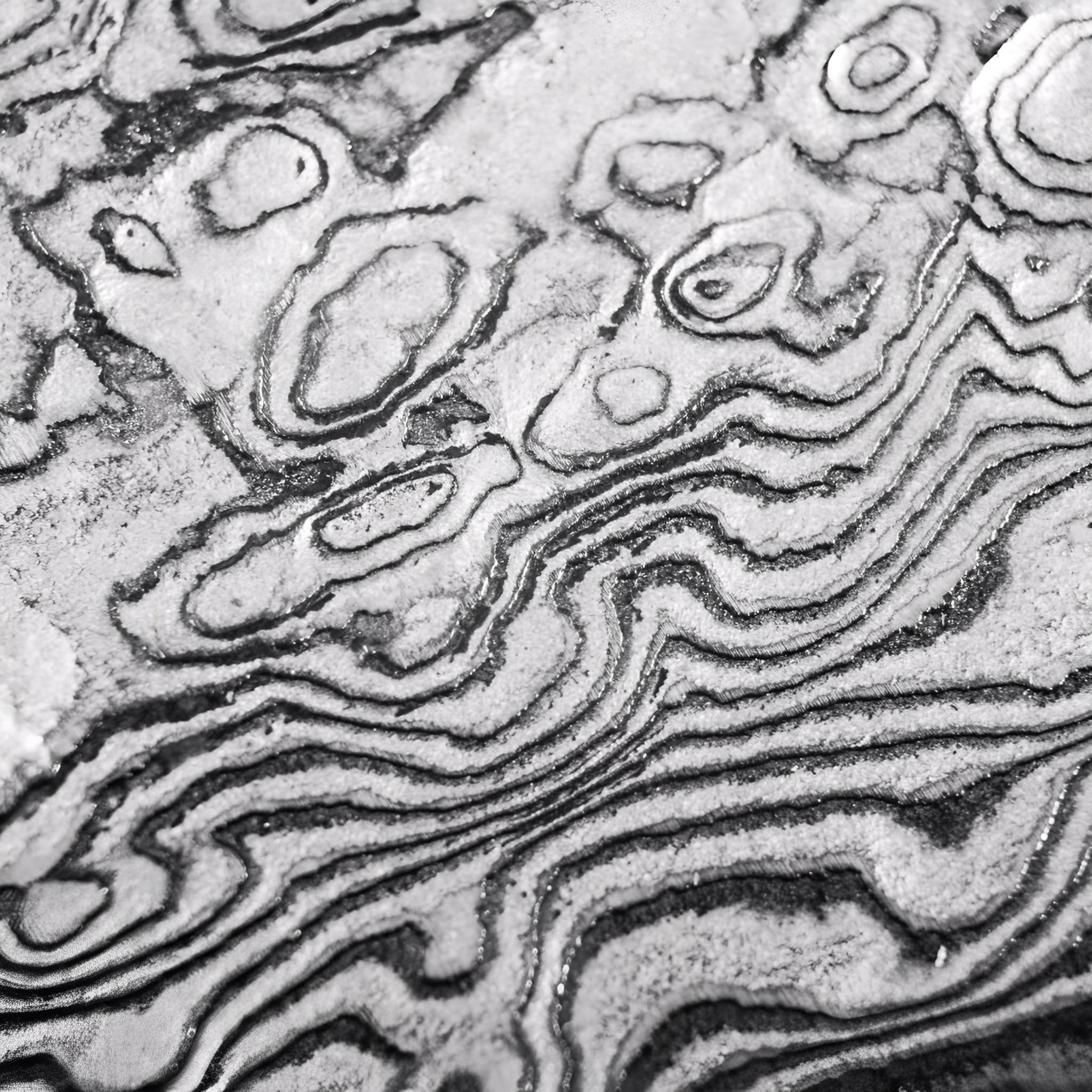
Materials Chosen Without Compromise
We select only the highest-grade steels and authentic fittings to ensure every katana is both a masterpiece and a reliable companion.
From the flawless hamon line to the perfectly balanced tang, each detail is carefully inspected to meet the highest standards of performance and aesthetics.
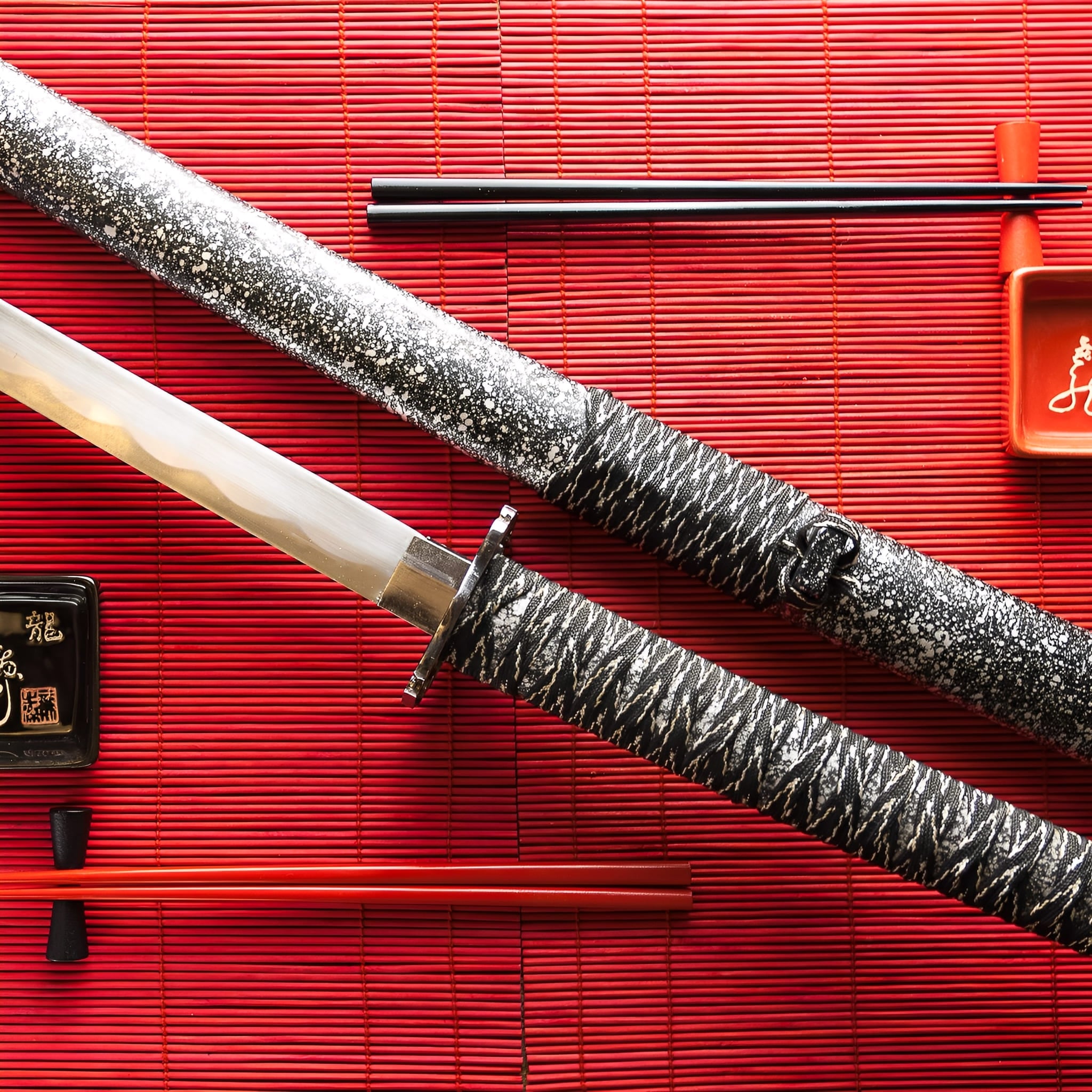
More Than a Sword, A Lifelong Legacy
Owning a handmade katana is an experience that goes beyond the blade itself. It’s holding history, tradition, and craftsmanship in your hands.
Whether displayed as a work of art or wielded with precision, your katana will stand as a symbol of timeless skill and dedication for generations to come.
-
Key Destinations
United States: 5–7 days
Canada: 5–7 days
Australia: 6–9 days
Denmark: 4–6 days
Netherlands: 3–5 days
Sweden: 4–6 days
Switzerland: 3–5 days
Finland: 5–7 days
Singapore: 6–8 days -
Central European Partners
France: 2–3 days
Germany: 3–5 days
Spain: 4–6 days
Italy: 4–6 days
Belgium: 3–5 days
Austria: 4–6 days
Ireland: 4–6 days
Poland: 4–6 days
Portugal: 4–6 days -
Extended EU Network
Czechia: 4–6 days
Hungary: 4–6 days
Slovakia: 4–6 days
Slovenia: 5–7 days
Romania: 5–7 days
Bulgaria: 5–7 days
Croatia: 5–7 days
Serbia: 5–7 days
Estonia: 5–7 days
Latvia: 5–7 days
Lithuania: 5–7 days
Luxembourg: 3–5 days
Greece: 5–8 days -
FAQ’s
Visit our FAQs page to find answers to common questions.